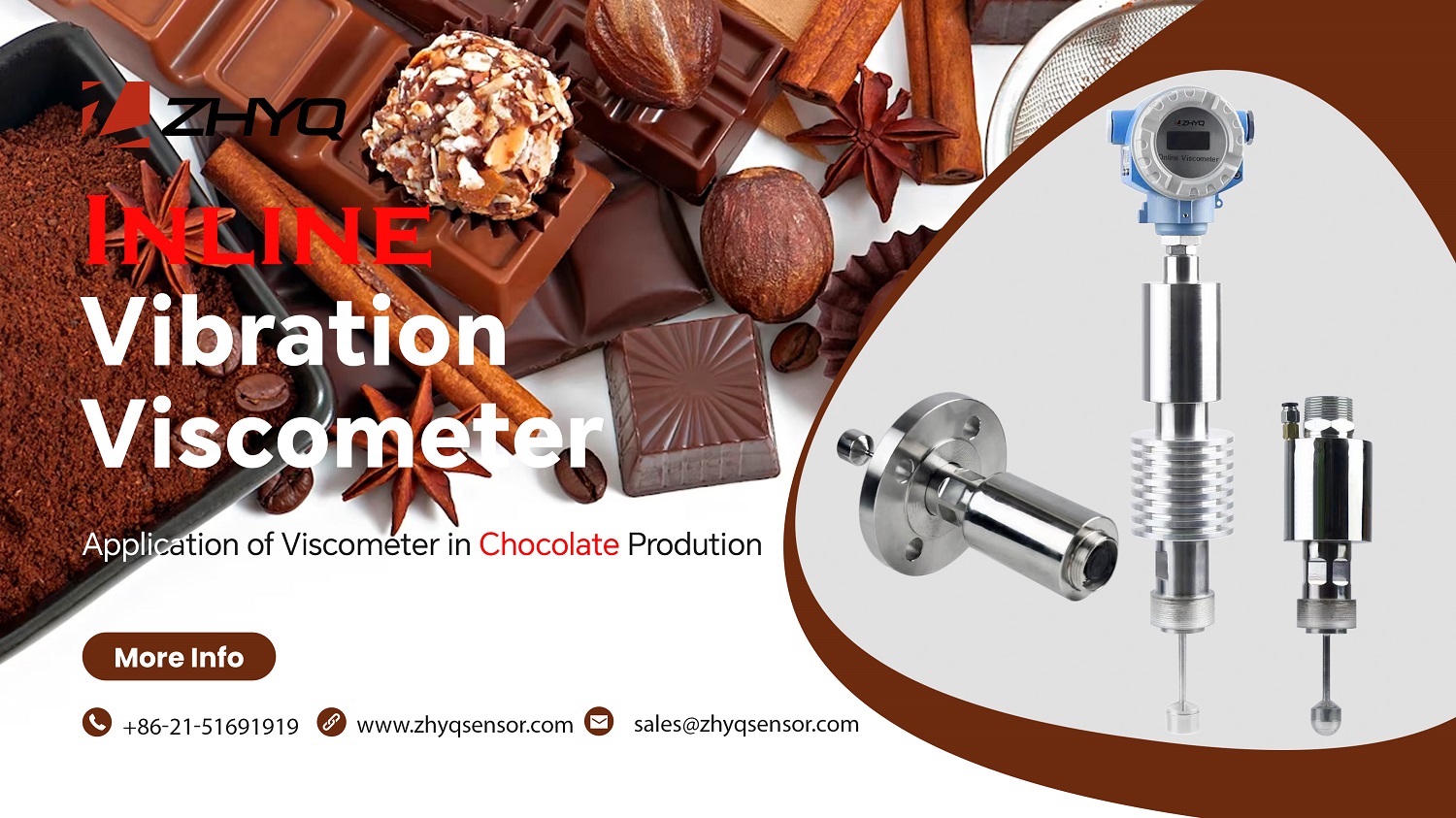
- Pressure Sensor, Pressure Transducer, Pressure Transmitter


- 2023-08-11
- Zhyq
- 38
Inline Viscosity for Chocolate Production!
Application
Central to chocolate quality is an appropriate melting behaviour so that products are solid at ambient temperature and melt on ingestion, with a final assessment of texture after phase inversion. Particle size distribution and ingredient composition play important roles in shaping its rheological behaviour and sensory perception. The flow properties of chocolate are important because the quality control of the product is a necessity. If viscosity is too low, the weight of the chocolate over the enrobed candy will also be too low. When it is too high, bubbles may form and they do not escape from the chocolate mold tablet. Also, the flavor of chocolate in the mouth is affected by viscosity; therefore, incorrect flow properties can be perceived by the consumer’s tongue – an extremely sensitive sensor. The perceived taste depends upon the order and rate of contact, which are related to the viscosity and rate of melt.
Measuring chocolate viscosity for quality control
The rheological measures of a product in the stage of manufacture can be useful in quality control. The microstructure of a product can also be correlated with its rheological behaviour allowing for the development of new materials. Rheometry permits attainment of rheological equations applied in process engineering, particularly unit operations that involve heat and mass transfer. Studies correlating chocolate composition and textural or rheological properties are commonly found when sourcing new fat or cocoa butter replacers which strongly affect rheological parameters on chocolate manufacture and final product texture. According to the rheological behaviour of the new mixtures, adaptations on manufacturing scale have to be done in order to keep the desirable sensory characteristics in the final product. Rheology is a useful feature on setting those issues.
The physical properties, rheological behaviour and sensory perception of chocolate are influenced largely by its processing techniques, particle size distribution and ingredient composition. To enhance chocolate texture, solid particle size distribution and ingredient composition can be manipulated to modify the physical properties, rheological behaviour and sensorial attributes. For good quality products and accurate weight control, the chocolate is supposed to have correct viscosity. For chocolate manufacturers and suppliers, it is desirable to have a method of measuring chocolate viscosity that has a high level of reproducibility.
Why is viscosity management critical in chocolate-making process?
The broad and significant factors which make viscosity management critical in chocolate-making process are:
- Chocolate texture, flavour & quality: Chocolates must comply with finished product specifications and any appropriate compendial requirements. Continuous inline viscosity monitoring can help attain desired rheological properties for a final defined product texture and melting characteristics.
- Uniform enrobing rate: Continuous viscosity monitoring and control assures a uniform flow rate for enrobing (covering an object like a nut or piece of fruit) and for block making.
- Reduce processing errors: Viscosity control can help alleviate the frequency of miscues – sticking and picking, twinning, peeling, splitting, cracking, roughness, blistering, bridging and surface erosion.
- Correct chocolate properties: Controlling the viscosity is the key to the right properties & consistency because that is the factor subjected to the highest variability. Rheological properties are mainly influenced by particle size distribution and ingredients composition, which in turn affects final texture and melting profile and also plays a significant role on process in industry.
- Reduce costs and improve profit margins: Generally, chocolate viscosity is controlled by addition of cocoa butter and expensive viscosity modifiers (surface-active ingredients, such as soybean lecithin). Poor viscosity management drives up usage of ingredients, affecting the profit margins.
- Waste: Materials rejected due to poor quality can be reduced with proper viscosity management.
- Efficiency: Eliminating manual viscosity control frees operators’ time and enables them to focus on other tasks.
- Compliance: Perhaps to a greater degree than other industries, food industry demands the highest levels of quality. The need to achieve target properties is non-negotiable when it comes to regulatory codes of food industry.
- Customer retention: Nothing kills brand loyalty more than customers finding that a piece of chocolate does not feel the same as the one they have come to love. Ensure high brand recognition and loyalty by ensuring the repeatability of the manufacturing process.
To ensure consistent high-quality and uniform processing, the change in viscosity through-out the process stream is monitored in real time, making measurements from a baseline rather than simply measuring absolute values, and making automatic viscosity adjustments by adjusting ingredients and temperature to keep it within specified limits.
Leave Your Inquiry
Your email address will not be published. Required fields are marked *


